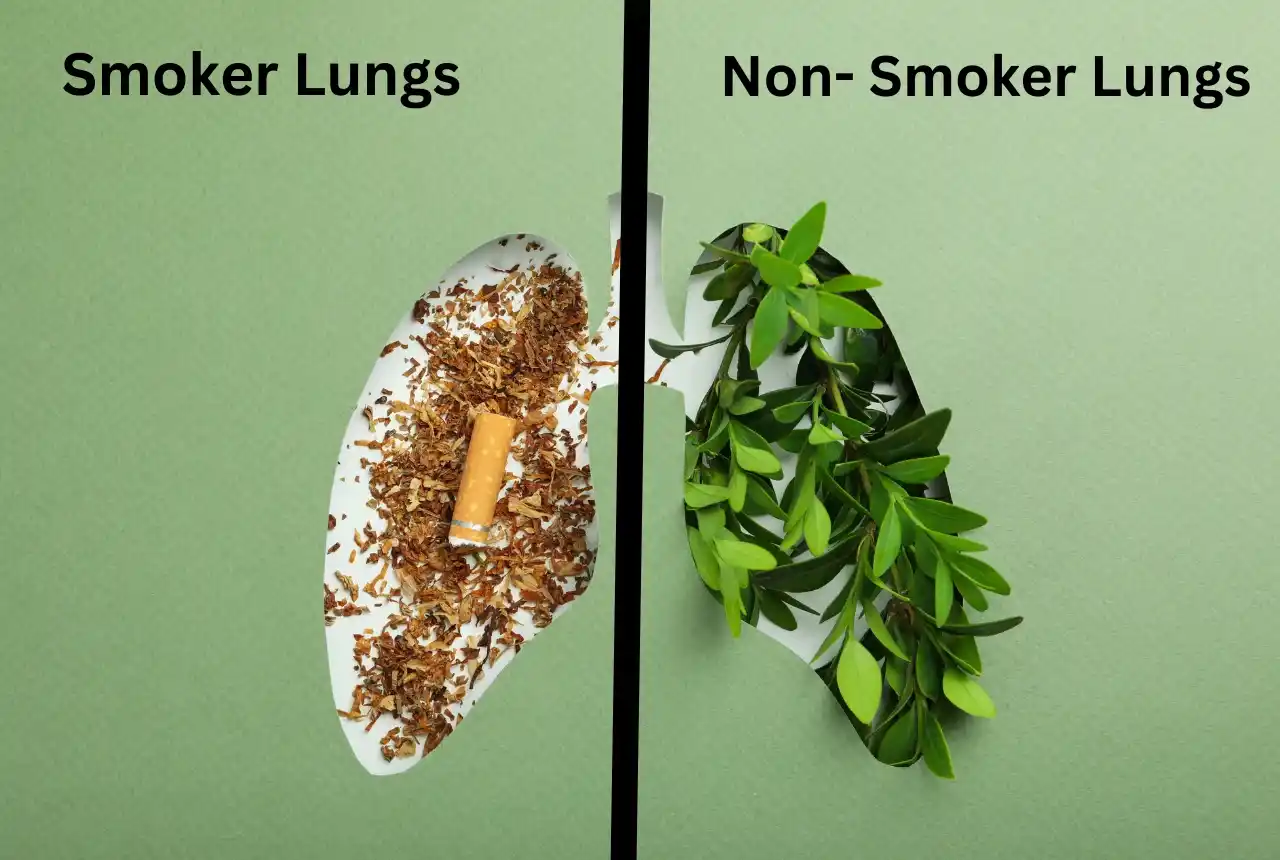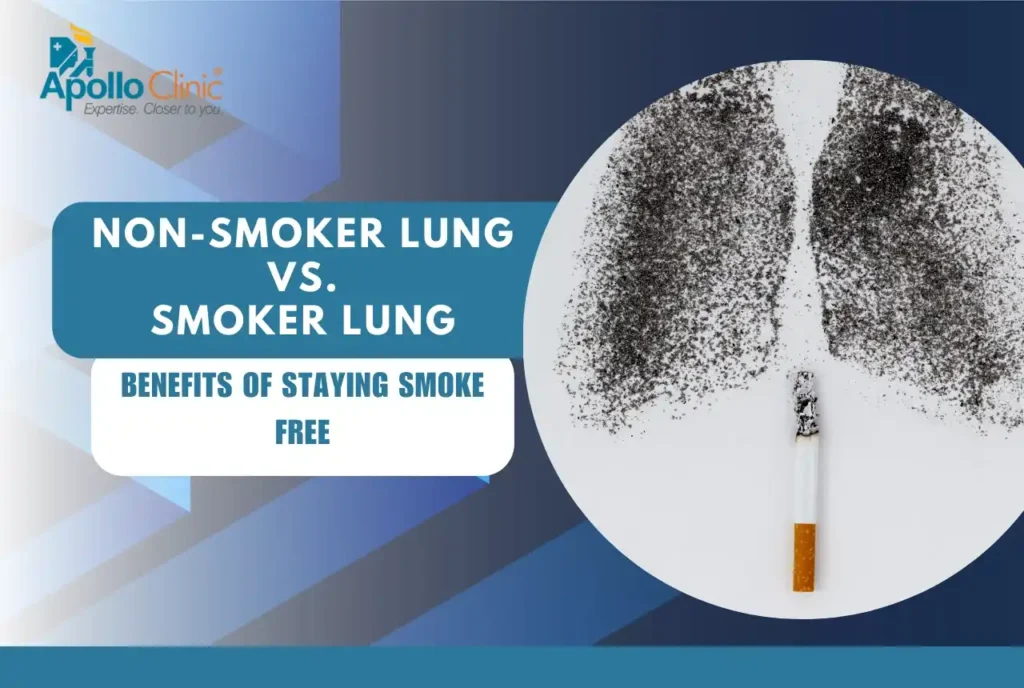Non-Smoker Lung vs Smokers Lung: Benefits of Staying Smoke-Free?
Non smoker lung vs smokers lung? what sets the lungs of a smoker apart from those of a non-smoker? The differences between the lungs of a smoker and a nonsmoker are striking and carry enormous connotations regarding health.
Cigarette smoke introduces injurious agents into the respiratory airway, thus bringing in structural changes in discoloration, diminished elastic recoil, and raised density of lung tissue. In addition, these changes create dysfunctional lungs, and that in turn causes reduced gaseous exchange as it leads to lesser oxygen assimilation and increased susceptibility to respiratory infections.
Compared to this, the airways of a non-smoker would remain clear and elastic- allowing for proper gas exchange through breath-taking. Benefits abound: from improved lung health, and a reduced probability of chronic conditions such as lung cancer or COPD, to improved quality of life.
These differences make smoking cessation all the more important for long-term health and highlight the positive impact of a smoke-free lifestyle on respiratory function and overall well-being.
This blog breaks down the debates about non smoker lung vs smokers lung, let’s continue reading this blog to know deeply about it.
Understanding the Differences in Smoker vs Non-Smoker Lungs

Structural and Visual Differences
The lungs of smokers and nonsmokers differ dramatically, with significant health effects. Smoking introduces several irritants into the respiratory system, resulting in both anatomical and functional alterations in the lungs. Notably, smokers’ lungs are often darker and more contaminated with tar and other toxic chemicals. These alterations also significantly decrease lung function, reducing oxygen absorption and increasing susceptibility to a variety of respiratory illnesses.
Nonsmokers, on the other hand, retain the inherent flexibility and purity of lung tissue, allowing these organs to function at peak efficiency. The benefits of quitting smoking are numerous, including but not limited to better lung health, protection from chronic illnesses, and increased general well-being. Understanding the variations is necessary to comprehend why smoking cessation is important and how it can help lung health.
Functional Differences and Health Implications 
Smoking drastically alters the look of the lungs. Color is one of the first things you notice; smokers’ lungs are often darker than normal owing to the tar content of tobacco smoke. Tar is a sticky material that can obstruct airways, coat lung tissue, and make the organ seem diseased.
Aside from color, smokers’ lungs have a very different texture and density than nonsmokers’. The flexibility of lung tissue declines with age in smokers, affecting lung tissue expansion and contraction during the breathing process. This loss of flexibility is caused in part by the breakdown of alveoli, tiny air sacs important for gas exchange, as a result of extended smoke exposure.
This ongoing irritation and inflammation promotes the thickening of the lungs’ walls, which is a common indication of persistent smoking. As a result, obstruction with airflow makes deep or normal breathing difficult for smokers. Tar, on the other hand, causes a decrease in lung capacity, lowering excellent breath.
When compared to nonsmokers, smokers’ lungs have a significantly lower functional capacity. Because smoking causes less effective exchange of oxygen and carbon dioxide, oxygen is difficult to move into the alveoli. Such difficulties may cause symptoms such as persistent coughing and shortness of breath, which can contribute to weariness.
Nonsmokers’ lungs, on the other hand, are significantly cleaner and more elastic, allowing for appropriate lung function and, as a result, health. The healthy lungs will be able to accept oxygen and release carbon dioxide for optimal functioning of all organs. Furthermore, nonsmokers are less likely to develop chronic respiratory diseases such as asthma, bronchitis, and COPD, which are more frequent among smokers as a result of long-term tobacco use.
Associated Risks for Smokers
Smoking is not just harmful to one’s lung health. Smoking significantly raises the risk of major diseases such as lung cancer, with studies suggesting that smokers are 15 times to 30 times more likely to get lung cancer than nonsmokers.
COPD is an umbrella term for illnesses such as emphysema and chronic bronchitis, which are characterized by persistent respiratory symptoms and airflow restriction caused by long-term exposure to hazardous chemicals found in tobacco smoke.
Top 5 Benefits of Staying Smoke-Free
1. Improved Lung Health and Respiratory Function

Smoke-free living will help to achieve a better level of oxygen in the blood, more elasticity in the lungs, and many other improved respiratory conditions. This reduces the risk of very severe chronic respiratory diseases such as asthma and bronchitis by several notches.
2. Reduced Cancer Risk
Non-smokers do not expose themselves to the carcinogenic substances contained in tobacco smoke, thus lowering their incidence of lung and other cancers. Recent statistics indicate that non-smokers have an incidence rate drastically lower than that of smokers.
3. Enhanced Cardiovascular Health

Not smoking helps protect the heart because it decreases the risk factors for heart disease, stroke, and hypertension. Cardiovascular risks for ex-smokers diminish with time since quitting and improve the function of the heart.
4. Improved Immune System and Healing Abilities
In general, the nonsmoker has more effective immunity that protects it against infections. Smoking degrades the immune response in that it prevents the healing of tissues and recovery of the body from diseases.
5. Better Quality of Life and Longevity
Studies frequently link smoke-free living with a higher lifetime and better quality of life. Non-smokers usually tend to report having a better state of physical fitness as well as psychological states of mind. Scientific research indicates that these types of nonsmokers may live significantly longer than other people who are smokers because they have reduced health risks.
Apollo Clinic Silchar: Your Partner in Lung Health
If you searching for a good lung care center or hospital, Apollo Clinic Silchar is the best lung care center in Northeast India where a patient seeking help and advice to quit smoking with healthy lungs will find abundant care.
This clinic offers treatment regarding lung health, conducts a test for respiratory illnesses, and conducts structured and comprehensive smoking cessation programs. Apollo Clinic Silchar offers personal medical services by skilled professionals as well, ensuring the patients give up smoking, but achieve healthy living as well.
Conclusion
In short, non smoker lung vs smokers lung talks about differences between a smoker’s lungs and that of a non-smoker are striking with serious consequences on health. The advantages of being smoke-free range from enhanced respiratory function, and reduced cancer risk, to improved quality of life.
Support for those quitting smoking or improving their lung health comes in handy, as in Apollo Clinic Silchar. The long-term health benefits of adopting a smoke-free lifestyle can be achieved by consulting health care providers.


